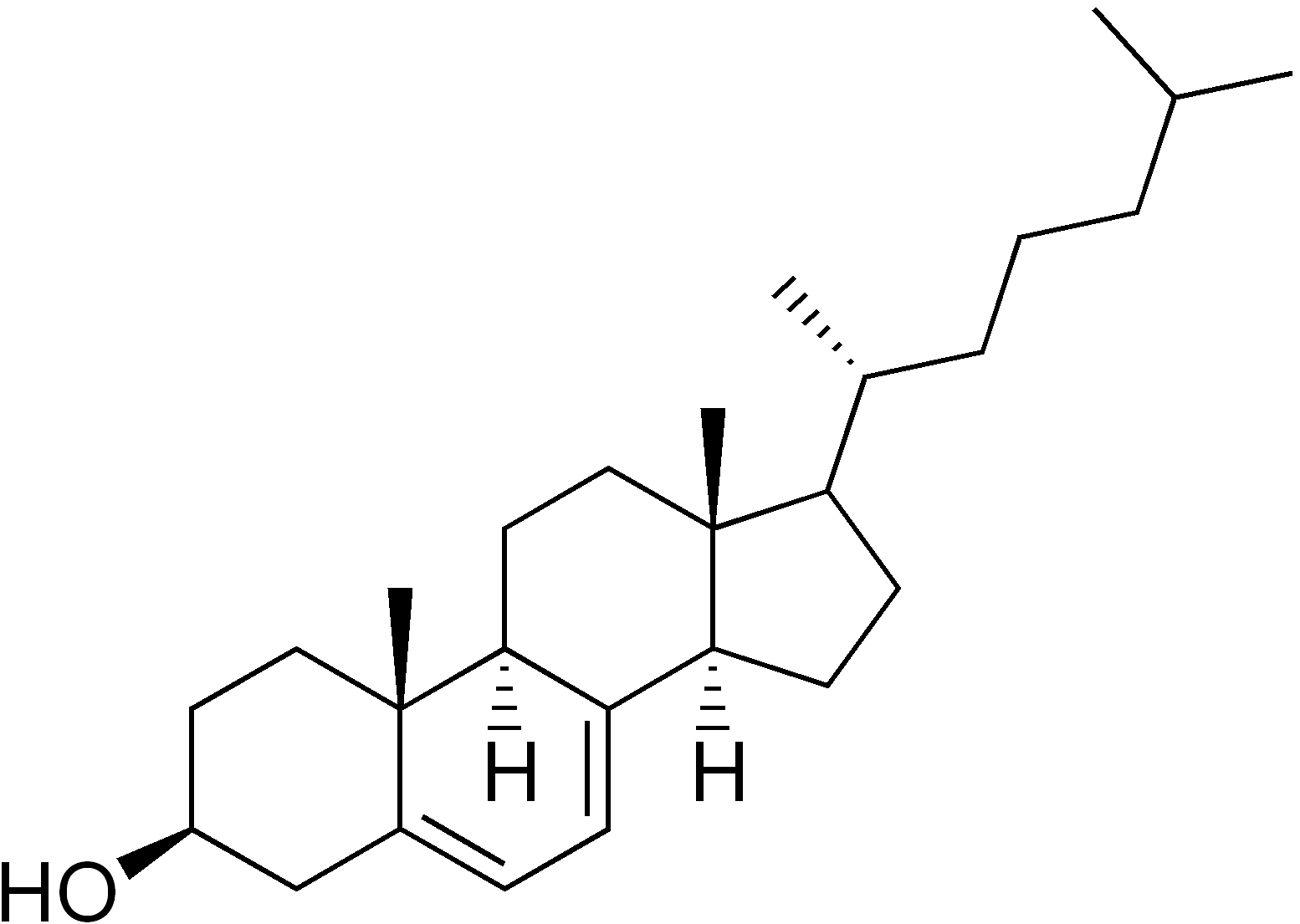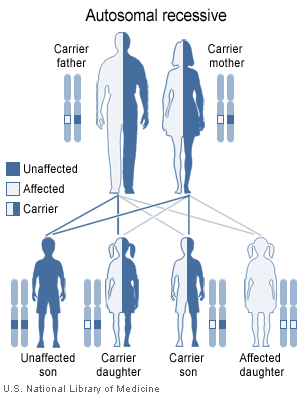Smith-Lemli-Opitz syndrome
| Smith-Lemli-Opitz syndrome | |
 | |
|---|---|
| 7-Dehydrocholesterol | |
| ICD-10 | Q87.1 |
| ICD-9 | 759.89 |
| OMIM | 270400 |
| DiseasesDB | 12223 |
| eMedicine | ped/2117 |
| MeSH | D019082 |
Synonyms and keywords:: SLO Syndrome, RSH Syndrome, RUTLEDGE LETHAL MULTIPLE CONGENITAL ANOMALY SYNDROME, POLYDACTYLY, SEX REVERSAL, RENAL HYPOPLASIA, AND UNILOBAR LUNG LETHAL ACRODYSGENITAL SYNDROME
Overview
Smith-Lemli-Opitz syndrome (also known as SLOS, or 7-dehydrocholesterol reductase deficiency) is a metabolic and developmental disorder that occurs due to deficiency of 7-dehydrocholesterol reductase. This is an enzyme required for formation of cholesterol from 7-dehydrocholesterol.
| Cholesterol | |||||||||||||||||||||||||||||||||||||
| DHCR7 | |||||||||||||||||||||||||||||||||||||
| 7-Dehydrocholesterol | |||||||||||||||||||||||||||||||||||||
| UVB radiation | |||||||||||||||||||||||||||||||||||||
| Pre-vitamin D3 | |||||||||||||||||||||||||||||||||||||
Presentation
This condition is characterized by distinctive facial features, small head size (microcephaly), mental retardation or learning disabilities, and behavioral problems. Malformations of the heart, lungs, kidneys, gastrointestinal tract, and genitalia are also common. Infants with Smith-Lemli-Opitz syndrome have weak muscle tone (hypotonia), experience feeding difficulties, and tend to grow more slowly than other infants. Most affected individuals have fused second and third toes (syndactyly), and some have extra fingers or toes (polydactyly). Cases of SLOS can vary widely in their clinical presentation. It is characterized by multiple congenital anomalies, but not all features are present in all affected individuals. The most commonly observed features include:
- Dysmorphic facial features include: micrognathia, thick upper alveolar ridges,V-shaped upper lip, short nose, microglossia, high arched palate
- Smaller head size (Microcephaly)
- Webbed neck
- Widely spaced nipples
- Mental retardation
- Grwoth restriction
- Syndactyly (most commonly of the second and third toes)
- Polydactyly
- Urogenital abnormalities including hypospadiasis, ambiguous genitilia.
- Cleft Palate
Internal findings include :
A diagnosis of SLOS is often made after a clinician observes a patient with a clustering of these features, and orders a blood test to measure the concentration of 7-dehydrocholesterol in the blood.[2] Further confirmation of diagnosis can be done by molecular genetic analysis of the DHCR7 gene.[1]
Biochemical Features
Defective 7-dehydrocholesterol reductase leads to decreased cholesterol and accumulation of cholesterol precursors like 7-dehydrocholesterol
Historical perspectives
In 1964, David Smith, Luc Lemli and John Opitz described a malformation syndrome in 3 patients, who had common facial dysmorphic features, developmental delay, microcephaly and urogenital abnormalities.[1] More descriptive profile for SLO was described in 1969, which was termed as RSH syndrome after the first letters of names of original patients. Description of more cases of SLO syndrome expanded its clinical presentation spectrum over the years. Few years later, more lethal phenotype of SLO syndrome was discovered which was termed as type II SLO which has significantly increased mortality in infancy.[2] Association of defective cholesterol synthesis and SLO syndrome was described for the first time in 1993.[3]
Genetics

Smith-Lemli-Opitz syndrome affects an estimated 1 in 20,000 to 40,000 births. Its incidence is equal in both males and females. It is most common in Caucasians of European ancestry, but less common among African and Asian populations. 40 new cases per year is the reported incidence in united States.[4]
This disorder is inherited in an autosomal recessive pattern. Missense mutations are the most common mutation accounting for SLOS.
Smith-Lemli-Opitz syndrome is caused by mutations in gene DHCR7 which codes for 7-dehydrocholesterol enzyme. DHCR7 gene has been localised to chromosome 11q23.[5] Mutations in the DHCR7 gene reduce or eliminate the activity of 7-dehydrocholesterol reductase, preventing cells from producing enough cholesterol.
Pathology
DHCR7 enzyme is responsible for the final step in the production of cholesterol. How cholesterol causes dysmorphogenesis, has not been completely established. Cholesterol deficiency is detrimental for fetal development as it is an essential component for normal embryogenesis. Cholesterol is also a structural component of cell membranes and the protective substance covering nerve cells (myelin). Additionally, cholesterol plays an important role in the production of certain hormones and digestive acids. Toxic effects of cholesterol precursors accumulation in blood and other tissues in addition to cholesterol deficiency also leads defective development. Additionally, disruption of signalling pathways involving sonic hedgehog protein is currently a prime theory for defective congenital development. [6]
Associated conditions
A 2006 study of 14 children with Smith-Lemli-Opitz syndrome reported that most children with SLOS have an autism spectrum disorder. SLOS appears to have the most consistent relationship with autism of any single-gene disorder.[7]
Prenatal Diagnosis and Screening
Severe cases of intra uterine growth restriction without a defined cause and pregnancies with a family history of SLOS should be screened prenatally for this syndrome. A 1995 study done retrospectively demonstrated that increased level of 7- dehydrocholestrol in amniotic fluid during second trimester can be used as a very effective screening test for SLOS. Increased ratio of 7-dehydrocholesterol/ cholesterol in amniotic fluid and chorionic villus samples is highly suggestive of SLOS. Low levels of unconjugated estriol E3 in maternal serum can also be used as a non-invasive screening procedure.[8]
Notable cases
On July 24th, 2007 a jury awarded a Florida couple, Daniel and Amara Estrada, whose sons are afflicted with Smith-Lemli-Opitz syndrome, 21 million dollars in damages. The Estradas claimed that Dr. Boris Kousseff failed to diagnose their first son's genetic disorder, leading to them having another son with the disorder.[9]
References
- ↑ SMITH DW, LEMLI L, OPITZ JM (1964). "A NEWLY RECOGNIZED SYNDROME OF MULTIPLE CONGENITAL ANOMALIES". J Pediatr. 64: 210–7. PMID 14119520.
- ↑ Curry CJ, Carey JC, Holland JS, Chopra D, Fineman R, Golabi M; et al. (1987). "Smith-Lemli-Opitz syndrome-type II: multiple congenital anomalies with male pseudohermaphroditism and frequent early lethality". Am J Med Genet. 26 (1): 45–57. doi:10.1002/ajmg.1320260110. PMID 3812577.
- ↑ Irons M, Elias ER, Salen G, Tint GS, Batta AK (1993). "Defective cholesterol biosynthesis in Smith-Lemli-Opitz syndrome". Lancet. 341 (8857): 1414. PMID 7684480.
- ↑ Kelley RI (1998). "RSH/Smith-Lemli-Opitz syndrome: mutations and metabolic morphogenesis". Am J Hum Genet. 63 (2): 322–6. doi:10.1086/301987. PMC 1377327. PMID 9683618.
- ↑ Moebius FF, Fitzky BU, Lee JN, Paik YK, Glossmann H (1998). "Molecular cloning and expression of the human delta7-sterol reductase". Proc Natl Acad Sci U S A. 95 (4): 1899–902. PMC 19210. PMID 9465114.
- ↑ Cooper MK, Porter JA, Young KE, Beachy PA (1998). "Teratogen-mediated inhibition of target tissue response to Shh signaling". Science. 280 (5369): 1603–7. PMID 9616123.
- ↑ Sikora DM, Pettit-Kekel K, Penfield J, Merkens LS, Steiner RD (2006). "The near universal presence of autism spectrum disorders in children with Smith-Lemli-Opitz syndrome". Am J Med Genet a. 140 (14): 1511–8. doi:10.1002/ajmg.a.31294. PMID 16761297.
- ↑ Schoen E, Norem C, O'Keefe J, Krieger R, Walton D, To TT (2003). "Maternal serum unconjugated estriol as a predictor for Smith-Lemli-Opitz syndrome and other fetal conditions". Obstet Gynecol. 102 (1): 167–72. PMID 12850625.
- ↑ "LOCAL - - Gainesville.com". Retrieved 2007-09-01.
See also
This article incorporates public domain material from the United States National Library of Medicine document "Genetics Home Reference".
Template:Phakomatoses and other congenital malformations not elsewhere classified
Template:Lipidemias
de:Smith-Lemli-Opitz-Syndrom nl:Syndroom van Smith-Lemli-Opitz